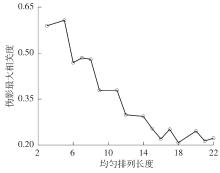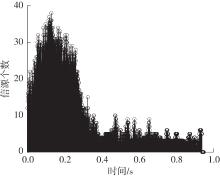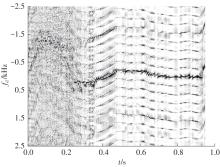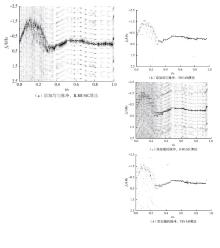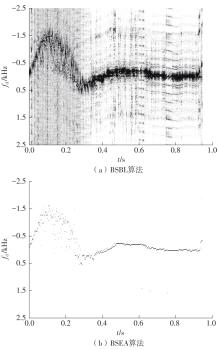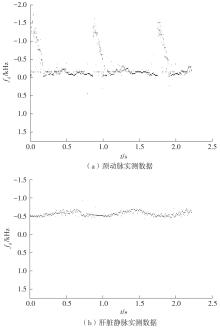| [1] |
LUO Yutao, GAO Qiang.
Traffic Sign Detection Based on Channel Attention and Feature Enhancement
[J]. Journal of South China University of Technology(Natural Science Edition), 2023, 51(12): 64-72.
|
| [2] |
LI Haiyan, YIN Haolin, LI Peng, et al..
Image Inpainting Algorithm Based on Dense Feature Reasoning and Mix Loss Function
[J]. Journal of South China University of Technology(Natural Science Edition), 2023, 51(9): 99-109.
|
| [3] |
LIU Yijun, WANG Jiada, ZHONG Shijie, et al..
Fast Multi-View Clustering Based on Uniform Label Matrix
[J]. Journal of South China University of Technology(Natural Science Edition), 2023, 51(9): 110-119.
|
| [4] |
WANG Shiyong, QIAN Guokang, LI Di, et al..
Real-Time Template Matching Method for Edge Features
[J]. Journal of South China University of Technology(Natural Science Edition), 2023, 51(9): 1-10.
|
| [5] |
HAN Le, JIANG Yihua.
Robust TruncatedL1-L2Total Variation Sparse Restoration Models
[J]. Journal of South China University of Technology(Natural Science Edition), 2023, 51(5): 45-53,140.
|
| [6] |
LIN Zhijian, DING Yongqiang, YANG Xiuzhi, et al.
Parallel Pipeline Hardware Design of Intra Rate-Distortion Optimization Prediction Mode in HEVC
[J]. Journal of South China University of Technology(Natural Science Edition), 2023, 51(5): 95-103.
|
| [7] |
YI Qingming, LÜ Renyi, SHI Min, et al.
Lightweight Object Detection Combined with Multi-Scale Dilated-Convolution and Multi-Scale Deconvolution
[J]. Journal of South China University of Technology(Natural Science Edition), 2022, 50(12): 41-48.
|
| [8] |
HE Kai, LIU Zhiguo, LI Dashuang, et al.
Non-rigid Point Set Registration Using Neighborhood Structure and Driving Force Criterion
[J]. Journal of South China University of Technology(Natural Science Edition), 2022, 50(4): 73-80.
|
| [9] |
ZHANG Yan, GAO Zijian, XU Changkang, et al.
Classification Method of Tactile Pressure Footprint Based on Fusion Distribution Graph Network
[J]. Journal of South China University of Technology (Natural Science Edition), 2022, 50(1): 91-100.
|
| [10] |
HU Guanghua, WANG Ning, HE Wenliang, et al.
Unsupervised Surface Defect Detection Method
Based on Image Inpainting
[J]. Journal of South China University of Technology (Natural Science Edition), 2021, 49(7): 76-85,124.
|
| [11] |
ZHANG Yan, WU Luotian, WANG Nian, et al.
2D Footprint Classification Based on Multiple-Module Relation Network
[J]. Journal of South China University of Technology (Natural Science Edition), 2021, 49(6): 66-76.
|
| [12] |
YANG Chunling LING Xi.
Two-Stage Multi-Hypothesis Network for Compressed Video Sensing Reconstruction Algorithms Based on Deep Learning
[J]. Journal of South China University of Technology (Natural Science Edition), 2021, 49(6): 88-99.
|
| [13] |
GENG Qinghua, LIU Weiming.
A Fast and Stable Algebraic Solution to Perspective-Three-Point Problem
[J]. Journal of South China University of Technology(Natural Science Edition), 2021, 49(1): 58-64,73.
|
| [14] |
ZHENG Sifan, WANG Weixing, HE Zhanhua, et al.
Research on Swing Amplitude Detection of Automobile Wiper with Two Granularity Optical Flow Manifold Learning#br#
[J]. Journal of South China University of Technology (Natural Science Edition), 2020, 48(1): 123-132.
|
| [15] |
XU Zhewei XU Ruilin LIU Qiong .
Method of Extraction Regions of Interest for Robust Vehicle Thermal Imaging Pedestrian Detection
[J]. Journal of South China University of Technology(Natural Science Edition), 2019, 47(2): 68-76,2.
|
